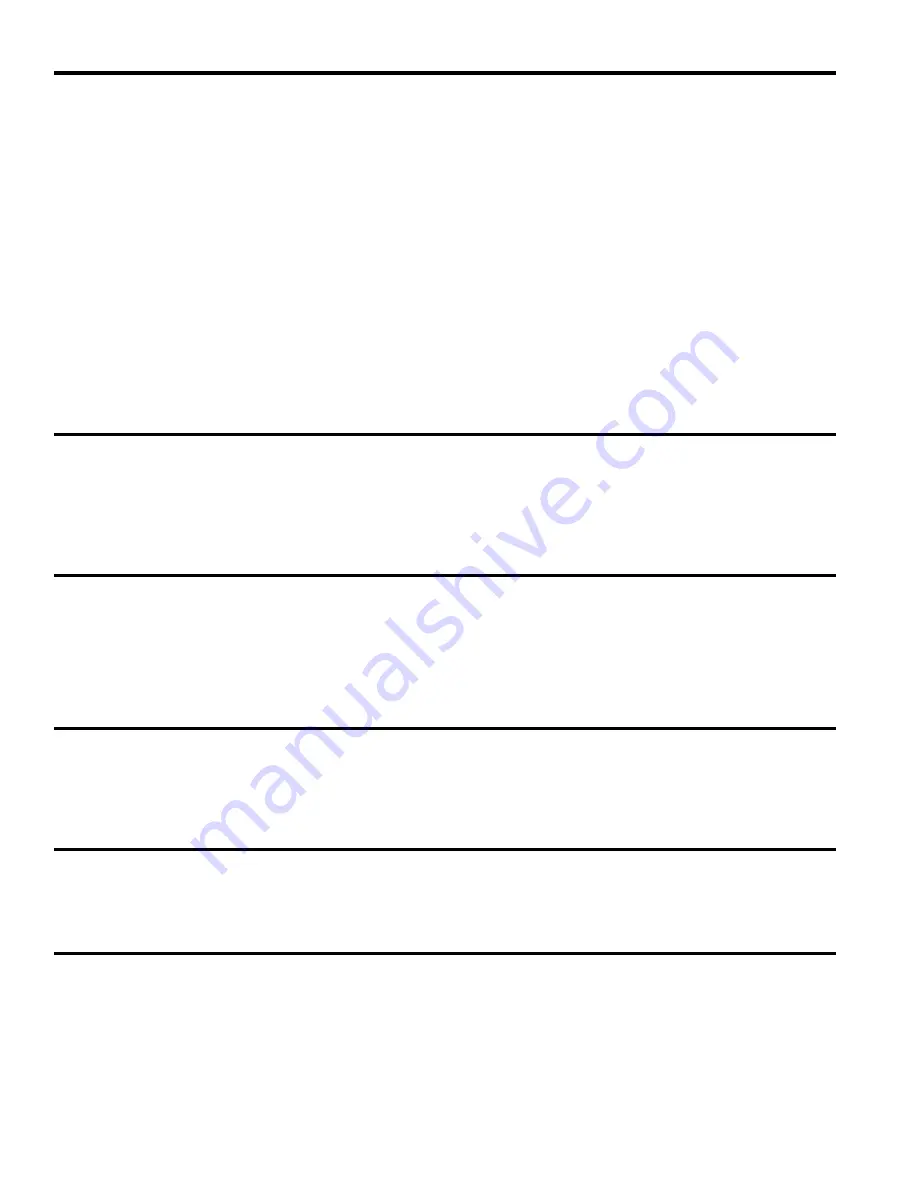
104-A00 Page 14/16
TROUBLESHOOTING
…. continued
EXCESSIVE NOISE AND VIBRATION
Probable Cause
Corrective Action
Cavitation or vaporization of the liquid resulting from
excessive vacuum on the pump due to starved suction.
Check for:
•
Inlet piping too long or too small in diameter.
•
Strainer plugged or dirty.
•
Undersized or restrictive fittings, such as globe valves or partially
closed valves.
•
Excessive amount of elbows.
•
Suction lift too great.
•
Pump speed too high for the viscosity of the liquid being pumped.
Entrained air or vapors in the pump.
Check pipe joints for leakage of air. Sometimes when recirculating
liquid in a tank, the returning liquid falling through the air carries air
down into the tank, which eventually gets back into the pump.
Pump speeds exceed the recommended maximum.
Check the recommended RPM for your specific application.
Continual or long term bypassing of liquid through relief
valve.
Check for restriction in the discharge line, or an improper relief valve
adjustment (See "Relief Valve" on Page 6).
Other possible causes of noise and vibration
•
Excessively worn vanes or discs.
•
Sleeve Bearing (Bushing) Worn or Damaged.
•
Loose or improperly installed piping.
•
Misalignment of pump and driver.
•
Pump base not properly mounted.
•
Insufficient Oil in the Gear Reducer
POOR OR NO PRIMING
Probable Cause
•
Air leaks in the suction line.
•
Restriction in the suction line.
•
Damaged or worn pump parts.
•
Too much lift for the vapor pressure of the fluid.
•
A dirty or clogged strainer.
•
Worn vanes.
•
Suction Valve Closed.
•
Incorrect pump rotation
•
Relief Valve partially open, valve not seating properly.
DAMAGED VANES
Probable Cause
•
Foreign objects entering the pump.
•
Running the pump dry for extended periods of time.
•
Cavitation.
•
Viscosity too high for the vanes and /or the pump
speed.
•
Incompatibility with the liquids pumped.
•
Excessive
heat.
•
Worn or bent push rods, or worn push rod holes.
•
Settled or solidified material in the pump at start-up.
•
Hydraulic hammer - pressure spikes.
•
Vanes installed incorrectly (see"Vane Replacement").
BROKEN SHAFT
Probable Cause
•
Foreign objects entering the pump.
•
Viscosity too high for the pump speed.
•
Relief valve not opening.
•
Hydraulic hammer - pressure spikes.
•
Pump/driver,
driveline/drive shaft misalignment.
•
Excessively worn vanes or vane slots.
•
Settled or solidified material in the pump at start-up.
•
Overtightened V-belts, if used.
SEAL LEAKAGE
Probable Cause
•
O-rings not compatible with the liquids pumped.
•
O-rings nicked, cut or twisted.
•
Shaft at seal area damaged, worn or dirty.
•
Pump sleeve bearings (bushings) worn excessively.
•
Excessive
cavitation.
•
Mechanical seal faces cracked, scratched, pitted or dirty.
MOTOR OVERLOAD
Probable Cause
•
Horsepower of motor not sufficient for application
•
Improper wire size / wiring and/or voltage to motor.
•
Misalignment in pump drive system.
•
Excessive
viscosity,
pressure or speed.
•
Faulty or worn bearings.
•
Rotor rubbing against head or cylinder.
•
Dirty mechanical seal faces.
Summary of Contents for SNP1.25
Page 15: ...104 A00 Page 15 16 NOTES...


































